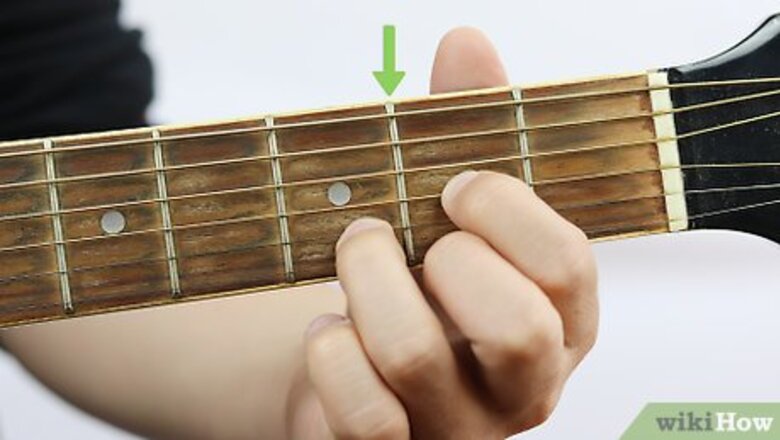
views
X
Research source
All of these are D-major chords.
Playing an Open D (Common Fingering)
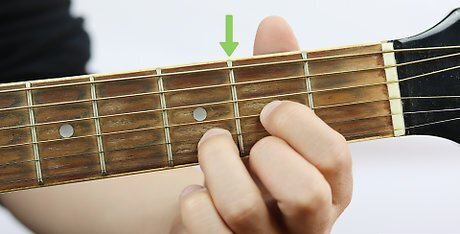
Start on the 2nd fret of the guitar. An open D chord is bright, high-pitched, and expansive. It is one of the most commonly used chords, and works well with other common open chords like E, A, and G. Remember that frets count from the head down. If you're right-handed, the first fret is all the way to your left.
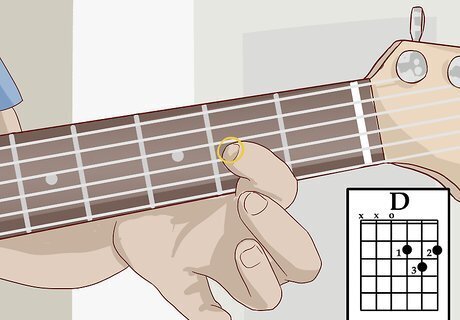
Place your index finger on the 2nd fret, 3rd string. Remember that the strings count from the bottom up, so the thinnest string is the 1st and the thickest is the 6th. Place you index finger down on the 2nd fret, 3rd string.

Place your ring finger on the 3rd fret, 2nd string. Your two fingers will be diagonal to each other.

Put your middle finger on the 2rd fret of the 1st string. When you're done, you should have a triangle shape across the bottom three strings. This is your finished D chord!
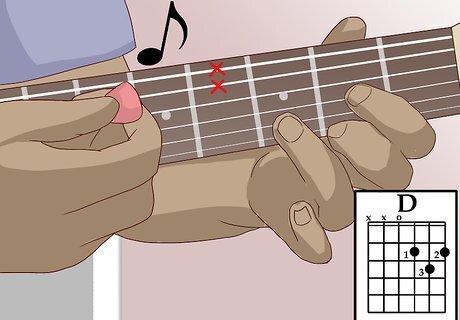
Strum every string except A and low E strings. Ignore the top two thickest strings on the guitar -- they are not used for the chord and will muck up the sound.
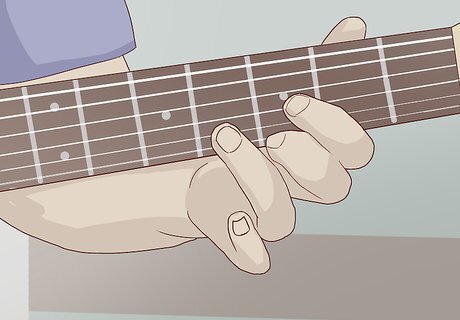
Know that you can move this shape up and down the neck to make other chords. This simply three-fingered shape can be slide up and down the bottom three strings to make more chords. Practice playing moving up and down the neck, searching out other chords. Note: Your ring finger determines the root of the chord. If it is on a B, then the chord is a B.
Playing a D-Major Barre Chord (A-Form)
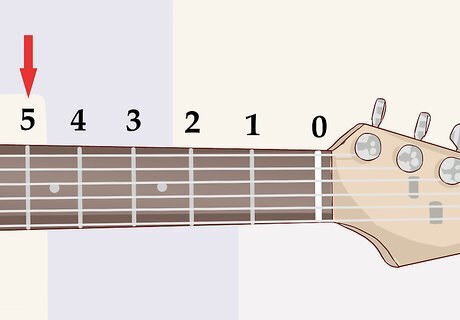
Go to the fifth fret of the guitar. This is a slightly "thicker," higher-pitched D chord. It is also much easier to get to when you're further down the neck, and easily transitions into other barre chords. If you already know it, this is simply an A-major barre chord located on the 5th fret, 5th string. This note is a D.

Bar the 5th fret with your index finger, getting all but the top string. Barre from the 1st to the 5th string with your index finger. Strum once to ensure that all of the strings are properly pressed down.
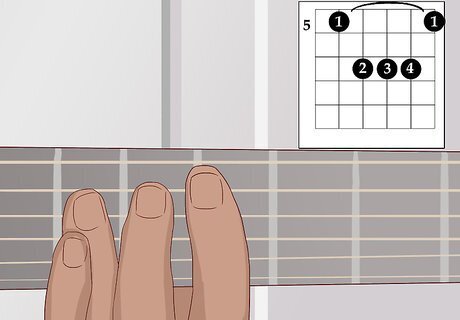
Use your ring finger to barre the 2nd, 3rd, and 4th strings at the 7th fret. You can also place your pinkie on the 2nd string, seventh fret, your ring finger on the 3rd string, 7th fret and your middle finger on the 4th string, 7th fret. Most people find it easier to just barre the string, but you will get a cleaner sound with individual fingers. If you slid the entire thing up the neck, using open strings instead of a barred index finger, you'd have an open A chord.

Leave the bottom string barred, or simply don't play it. The top and bottom strings are the least essential for your chord. If you can strum just the middle four strings, you'll have a better-sounding chord, but you can also strum the high-e string for a little more noise. Do not strum the top string.
Playing a D-Major Barre Chord (E-Form)

Slide all the way down to the 10th fret. This is a very high and bright sounding D-chord, and isn't used too often unless you're playing all of your chords that far down the neck. Still, knowing how to form this chord is a lot of fun, and can give your songs a breath of fresh air when thrown in for a normal D. This chord is melodically identical to those before it, just at a different "octave."
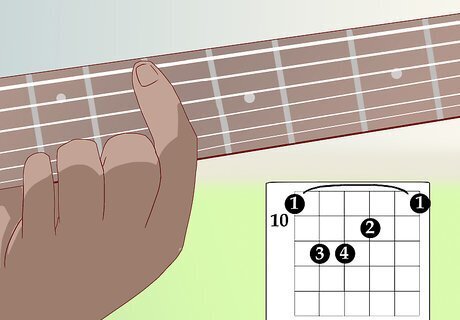
Barre the entire 10th fret with your index finger. This is simply an E-form barre chord, meaning you form an E-major chord with your pinky, ring, and middle finger, then barre two frets up with the index. The result is the same shape as a normal E chord, just with barred notes instead of open notes.
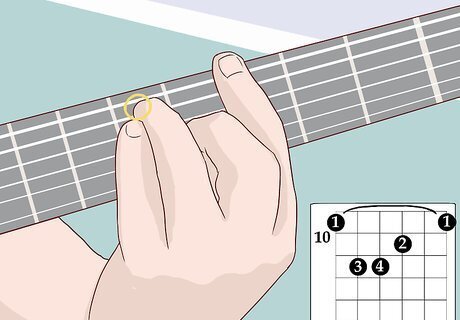
Place your ring finger on the 12th fret, 5th string. This note is an A. The first note, the one on the 10th fret, 6th string, is a D.
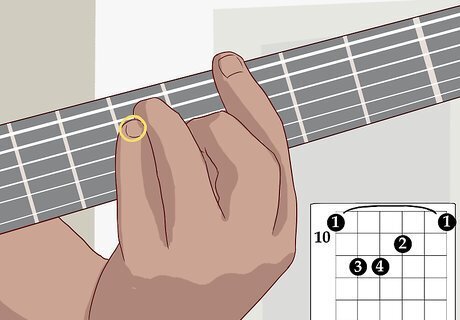
Place your pinky on the 12th fret, 4th string. This is another D.
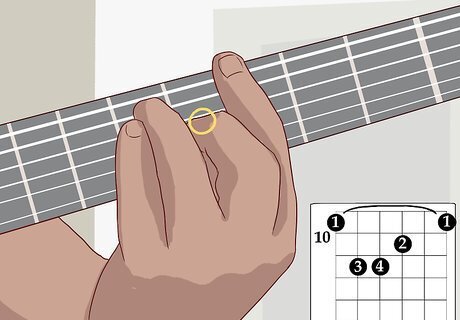
Place your middle finger on the 11th fret, 3rd string. This note is an F#, and is needed for a full D chord.
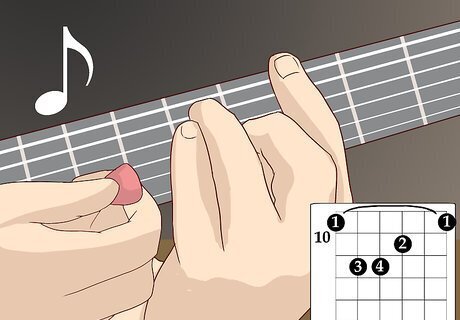
Leave the other strings barred, then strum all six at once. This chord uses every single string on the guitar, though you can stick just to the top ones for a thicker, slightly deeper chord.













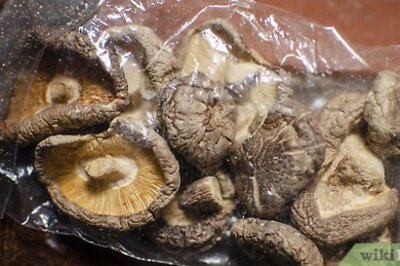



Comments
0 comment